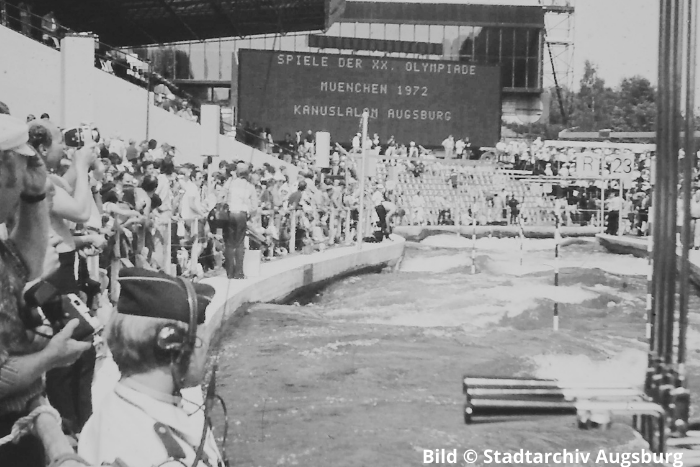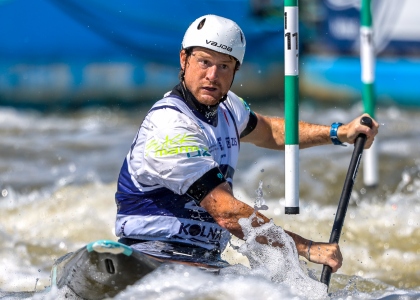Next week Augsburg in Germany will host the ICF Canoe and Extreme Slalom World Championships, on the same venue that hosted the very first appearance of canoe slalom at an Olympic Games in 1972.
A series of events have been planned to celebrate the 50-year anniversary of this important chapter in the sport’s history, and the incredible legacy the venue has provided the region.
But the history of the “Ice Channel” dates back much further than 1972. Journalist Franz Haussler from the Augsburger Allgemeine newspaper uncovers the history of this incredible venue. Translation by Hermann Schmid
The “Ice Channel”, the artificial whitewater course constructed for the 1972 Olympic Canoe Slalom contest, derives its nickname from a short channel built in 1878/79 south of the city in the vicinity of river Lech.
For many centuries the city of Augsburg has been using water power from several channels diverted from the river Lech. This water power was also used from 1879 owardsn to run the newly constructed drinking water pumping station. From the pumping station, the “Ice Channel” flowed to a nearby section of the river Lech. It had the task to keep the turbines running and also, in the wintertime, to divert chunks of ice flowing on the water into the river Lech, to keep them from harming the turbines in the city.
From 1942 on, electrical engines were running the turbines in the drinking water pumping station, so the “Ice Channel” lost its original function. Shortly after the end of World War II members of the “Augsburger Kajak-Verein” (AKV) were looking for whitewater close to the city. In 1946 they inserted wooden obstacles into the channels near the water works and created an early version of an artificial whitewater course.
In 1947 there took place the first canoe slalom contest and in 1948 the Swabian Canoe Slalom Championships. 52 canoeists competed before a crowd of 3000 spectators. In July 1950, the first German championships in “Kajak- and Folding-Boat Slalom” took place on what newspapers described as a “fast and extremely difficult course”.
In 1953, Augsburg hosted the first international contest. In 1957, the first Canoe Slalom World Championships, came to the Augsburg. In 1960 and 1963 there were further German Championships, for which the course was prepared with additional obstacles. In January 1970, the Organizing Committee for the 1972 Olympic Summer Games in Munich decided to have the canoe slalom contest, a first at the Olympics, in Augsburg.
Immediately planning started for the worldwide first artificial whitewater course. In July 1970, around 8000 spectators watched the last international canoe slalom championships on the old “Ice Channel”. Just one day later, the groundbreaking ceremony for the new whitewater course took place.
It was to be built completely in concrete. Its shape, designed to create whirls, vortexes, eddies and water rollers, was developed in model tests. In 1971/72 construction took place of a 660 meters long and around 10 meters wide concrete channel that had an overall drop of 4.5 meters. The aim was to have the water run at up to 5 metres per second.
The surrounding area with soft slopes was designed for up to 24.000 spectators. But actually around 30.000 came to the Olympic contests that started on August 28th, 1972. From that moment on the Augsburg “Ice Channel” nearly every year has been the venue of major national and international canoe slalom contests, among them many World Cup races and the ICF World Championships of 1985 and 2003.
In addition, all the year round it provides world class training facilities for leisure as well as high level paddlers. When in July of 2019 the UNESCO awarded the title of World Heritage to the “Augsburg Water Management System”, the “Ice Channel” became the first (and so far only) active sports venue in that category.





